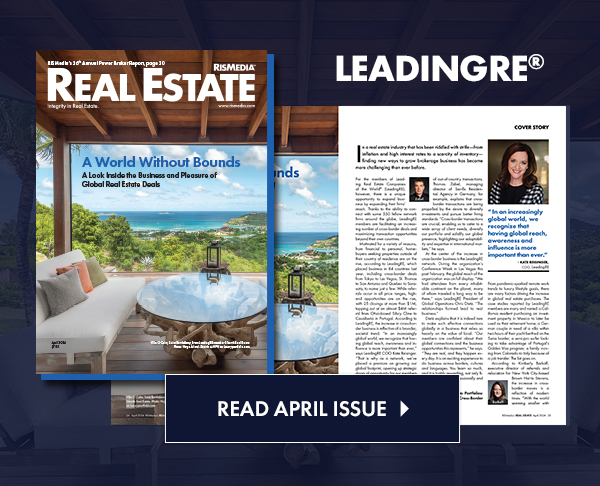RISMEDIA, September 1, 2010—The delinquency rate for mortgage loans on one-to-four-unit residential properties dropped to a seasonally adjusted rate of 9.85% of all loans outstanding as of the end of the second quarter of 2010, a decrease of 21 basis points from the first quarter of 2010, and an increase of 61 basis points from one year ago, according to the Mortgage Bankers Association’s (MBA) National Delinquency Survey. The non-seasonally adjusted delinquency rate increased two basis points to 9.40% this quarter from 9.38% last quarter.
The percentage of loans on which foreclosure actions were started during the second quarter was 1.11%, down 12 basis points from last quarter and down 25 basis points from one year ago.
The delinquency rate includes loans that are at least one payment past due but does not include loans in the process of foreclosure. The percentage of loans in the foreclosure process at the end of the second quarter was 4.57%, a decrease of six basis points from the first quarter of 2010, but an increase of 27 basis points from one year ago.
The combined percentage of loans in foreclosure or at least one payment past due was 13.97% on a non-seasonally adjusted basis, a four basis point decline from 14.01% last quarter.
The seriously delinquency rate, the percentage of loans that are 90 days or more past due or in the process of foreclosure, was 9.11%, a decrease of 43 basis points from last quarter, but an increase of 114 basis points from the second quarter of last year.
Reversal of recent trends
“These latest delinquency numbers contain a mixture of somewhat good news and somewhat bad news. The good news is that foreclosure starts are down and the inventory of homes anywhere in the process of foreclosure fell for the first time since 2006 and had the largest drop since 2005. Loans 90 days or more past due, the largest share of delinquent loans, also fell. The fact that both the 90+ delinquency rate fell and the foreclosure start rate fell means that a significant number of these seriously delinquent loans have been successfully modified and reclassified as performing, current loans,” said Jay Brinkmann, MBA’s chief economist.
“The disappointing news is that, after declining since the beginning of 2009, the rate of short-term delinquencies is going up and the increase in these short-term delinquencies may ultimately drive the foreclosure measures back up. The percent of loans one payment behind had peaked in the first quarter of 2009 at 3.77% and fell to 3.31% by the end of 2009. Unfortunately that rate has now risen to 3.51%. The causes are likely two-fold. First, 30-day delinquencies are very closely tied to first-time claims for unemployment insurance. The number of first-time claims fell through most of 2009 but leveled off in 2010 and have started to rise again. This increase in unemployment directly impacts mortgage delinquencies. Second, some percentage of the loans modified over the last several years have become delinquent again because those borrowers, by definition, have weak credit.
“Ultimately the housing story, whether it is delinquencies, home sales or housing starts, is an employment story. Only when we see a consistent increase in employment will we see an increase in sales and starts, and a sustained improvement in the delinquency numbers. Until we see the increase in the number of households that comes with an increase in the number of paychecks, all measures of the health of the housing industry will continue to be weak,” Brinkmann said.
Change from first quarter 2010
On a seasonally adjusted basis, the overall delinquency rate decreased, driven by decreases in the rate for fixed rate loans and VA loans. ARM and FHA loans saw increases this quarter. The seasonally adjusted delinquency rate stood at 5.98% for prime fixed loans, 13.75% for prime ARM loans, 25.19% for subprime fixed loans, 29.50% for subprime ARM loans, 13.29% for FHA loans and 7.79% for VA loans.
The non-seasonally adjusted foreclosure starts rate decreased for all loan types with the exception of prime fixed loans. The foreclosure starts rate increased two basis points for prime fixed loans to 0.71%, which ties the survey’s record high for the prime fixed category, last seen in the third quarter of 2009. Prime fixed loans make up the majority of loans outstanding in the market, with an estimated share of 63%. The foreclosure starts rate decreased 33 basis points for prime ARM loans to 1.96%, 34 basis points for subprime fixed loans to 2.30%, 93 basis points for subprime ARM loans to 3.39%, 44 basis points for FHA loans to 1.02% and 19 basis points for VA loans to 0.70%.
Change from second quarter 2009
Given the challenges in interpreting the true seasonal effects in these data when comparing quarter to quarter changes, it is important to highlight the year-over-year changes. The non-seasonally adjusted delinquency rate increased 71 basis points for prime fixed loans, 149 basis points for prime ARM loans, 141 basis points for subprime fixed loans and 197 basis points for subprime ARM loans from the second quarter of 2009. The delinquency rate was 107 basis points lower for FHA loans and 29 basis points lower for VA loans relative to the same quarter a year ago.
The non-seasonally adjusted foreclosure starts rate increased four basis points for prime fixed loans and two basis points for VA loans from a year ago. The starts rate decreased 78 basis points for prime ARM loans, 53 basis points for subprime fixed loans, 213 basis points for subprime ARM loans and 13 basis points for FHA loans on a year-over-year basis.
Eleven states saw increases in the rate of foreclosure starts on a year-over-year basis, with the largest increases coming in Illinois, South Dakota and New Mexico. The largest decreases were in California, Florida, and Nevada.
For more information, visit www.mortgagebankers.org.










